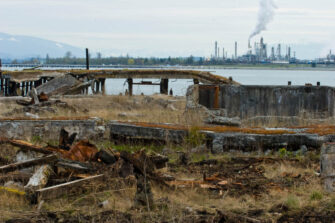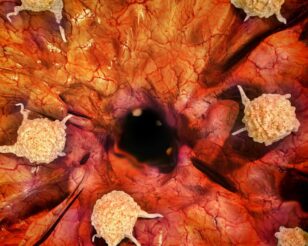Were You or Your Child Harmed by Exposure to Industrial Solvent TCE? We Command the Respect of our Adversaries

Although a case against IBM in Endicott, New York, over environmental contamination has forced TCE into the spotlight, there are actually hundreds of contaminated sites in NYC and the rest of New York where people may have been exposed.
New York Attorneys Dedicated to Helping Those Harmed by TCE Exposure
Table of Contents
If you suspect your health problems or your child’s suffering is tied to TCE exposure, contact our trusted New York product liability lawyers at Belluck Law, LLP today to discuss how we can help you pursue compensation for what you and your family are going through. Our New York personal injury attorneys have dedicated their legal careers to fighting for people who have developed cancer and other diseases due to exposure to harmful products such as benzene and asbestos. We believe that companies should be held accountable for polluting the environment with dangerous chemicals such as TCE and putting innocent people and unborn babies at risk.
Contact us today to schedule a free consultation regarding your exposure to TCE. Our firm has the experience, the resources, and the in-depth knowledge that is necessary to seek justice for you.
How Could I Have Been Exposed to TCE?
TCE is a colorless, odorless liquid that evaporates quickly. When it is accidentally spilled or purposefully dumped at industrial sites, it can soak into the ground and contaminate a broad area. Because TCE is a volatile chemical, it can seep out of contaminated soil and water and cause what’s known as “vapor intrusion” in nearby buildings and homes.
The New York State Department of Health warns that there are many ways people can be exposed to TCE, including:
- Breathing in TCE.
- Drinking contaminated water.
- Eating contaminated food.
- Coming into contact with contaminated soil.
- Skin contact with TCE directly or other contaminated material.
Where Is TCE Contamination Found in New York?
 Despite its toxicity, TCE is still being used today in industries and businesses and can be found at contaminated sites across New York State and throughout the rest of the country. The most common areas of exposure include:
Despite its toxicity, TCE is still being used today in industries and businesses and can be found at contaminated sites across New York State and throughout the rest of the country. The most common areas of exposure include:
- Superfund Sites, which are identified by the federal government as some of the most contaminated pieces of land in the country. The U.S. Environmental Protection Agency, which is tasked with cleanup of these sites, enables people to search for Superfund sites near you on its website.
- Legacy Sites, which are areas where pollution and contamination remain although the responsible party may be long gone. The New York Department of Environmental Conservation has evaluated or is continuing to evaluate more than 400 legacy sites throughout the state for vapor intrusion.
- Workplaces where employees use TCE. According to the Agency for Toxic Substances and Disease Registry, these include industries that use TCE as a solvent to remove grease from metal parts; to make the refrigerant HFC-134a; to scour cotton, wool, and other fabrics; in dry-cleaning operations; and as a component of adhesives, lubricants, paints, varnishes, paint strippers and pesticides.
- Homes, schools and businesses near TCE contaminated sites. Because TCE can spread so easily into soil, groundwater and the air, any buildings near contaminated sites can be at risk for unsafe levels of the chemical.
What Are the Health Effects of TCE?
 TCE is classified as a carcinogen to humans by the U.S. Environmental Protection Agency, which means it can cause cancer. However, studies in humans and animals have shown that exposure to TCE can have a wide range of health effects.
TCE is classified as a carcinogen to humans by the U.S. Environmental Protection Agency, which means it can cause cancer. However, studies in humans and animals have shown that exposure to TCE can have a wide range of health effects.
The Agency for Toxic Substances and Disease Registry warns that the more serious health dangers posed by TCE include:
- Liver cancer
- Kidney cancer
- Malignant lymphoma
- Testicular cancer
- Birth defects such as congenital heart defects and central nervous system defects.
Can I Be Tested for TCE Exposure?
There are ways to test your TCE levels, although the results may not necessarily indicate that you will suffer health effects from the exposure. The New York State Department of Health indicates that:
- Breath and blood tests can be used to measure recent TCE exposure (for example, within the past week or so).
- Urine and blood tests can be used to measure TCE breakdown products for up to several weeks after exposure. However, these tests are not necessarily conclusive because exposure to other chemicals can produce the same breakdown products in the urine and blood as TCE.
You should talk to your doctor immediately if you or your child is experiencing health problems that may indicate TCE exposure.
How Can Belluck Law, LLP Help Me or My Child?
At Belluck Law, LLP, our compassionate attorneys have extensive experience working with medical specialists and researchers to help people who may be suffering from exposure to a dangerous chemical or other hazardous material. We also have the resources necessary to investigate how you may have been exposed to TCE and who may be held accountable for your injuries.
In our many years of fighting for the rights of injured people, we have secured more than $600 million for our clients and their families – including two recent multimillion-dollar settlements for victims of the devastating cancer mesothelioma. Our dedicated attorneys know the financial burdens that cancer victims and other severely injured people face, and we will aggressively pursue full and fair compensation from the companies that put you and your family in harm’s way.
Call our NYC law office to schedule a free consultation. We also have locations at Woodstock, Rochester and Albany.
Sources:
- Agency for Toxic Substances and Disease Registry: Toxic Substances Portal – Trichloroethylene (TCE)
- New York Department of Environmental Conservation: Status of Vapor Intrusion Evaluations at Legacy Sites
- New York State Department of Health, Bureau of Toxic Substance Assessment: Trichloroethene (TCE) in Indoor and Outdoor Air
- U.S. Environmental Protection Agency: Search for Superfund Sites Where You Live